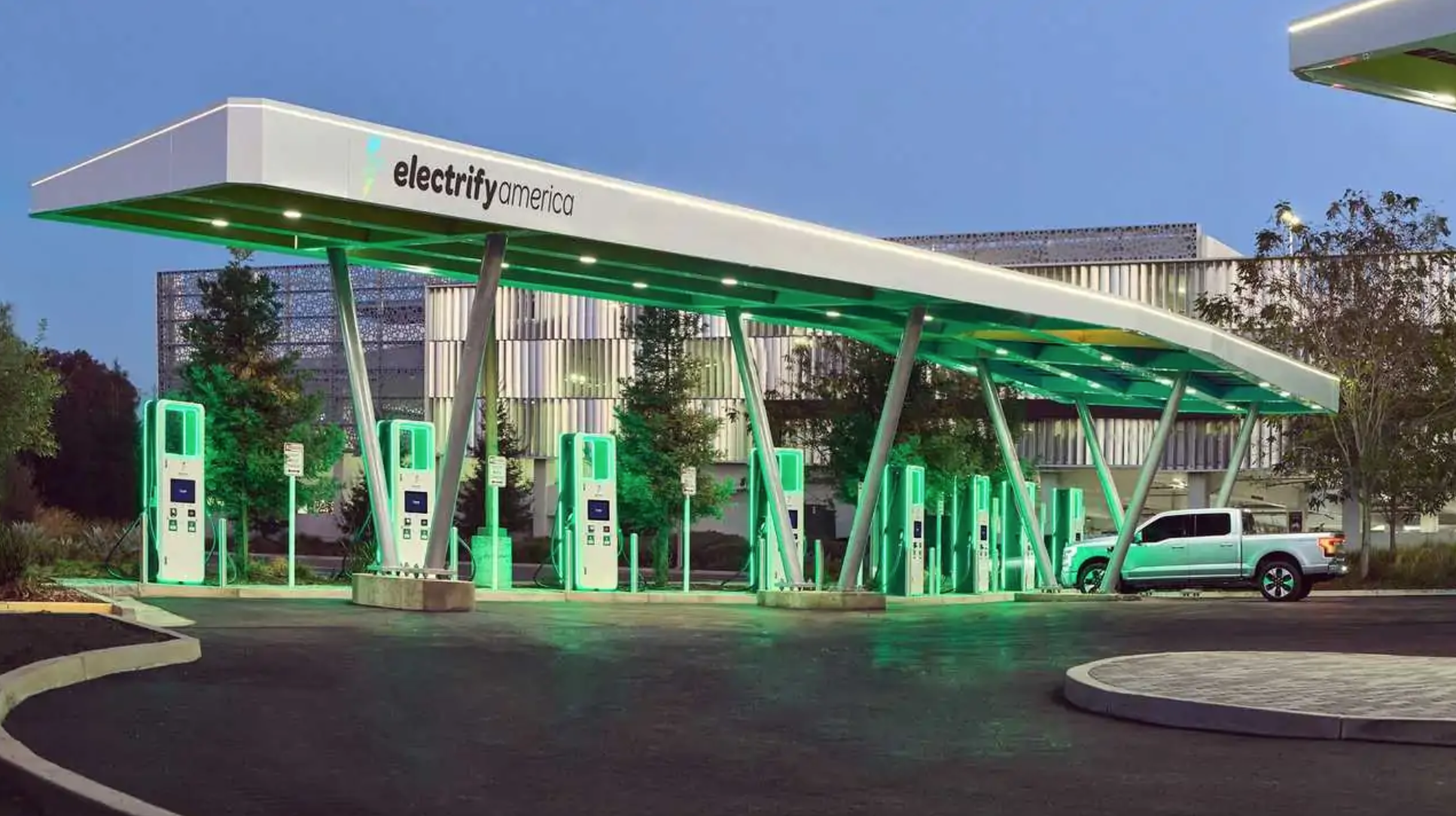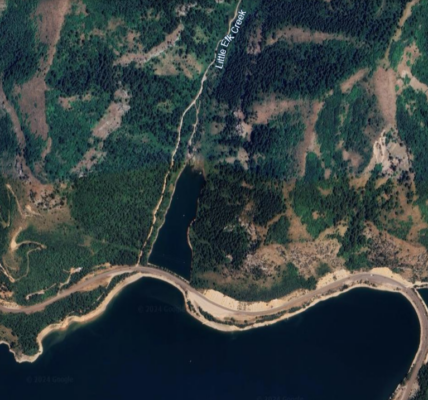
By Dustin Bleizeffer, WyoFile.com
Patrick Lawson of Riverton was in the driver’s seat of a Tesla Model S 100D Ludicrous between Rawlins and Laramie on Interstate 80 last week, but it was the car that was doing the driving.
“It’s passing a semi truck right now because [the semi is] going too slow,” Lawson told WyoFile.
Cross-winds of up to 60 mph were chewing into mileage, Lawson said. But after departing from home in Riverton with a full battery he’d topped it off at a “high-speed” EV charging station during a stop in Rawlins. A full charge will propel the Tesla over 300 miles of road, he said.
However, relying on an electric vehicle in Wyoming can be challenging. There are many “dead zones” — especially in the central portion of the state, Lawson said. Also, most all the existing charging stations available to the public are exclusively designed to charge Tesla vehicles.
That will soon change, thanks to a new federal EV infrastructure initiative. Wyoming has access to nearly $24 million in federal dollars to begin “electrifying” its roadways, beginning with the three interstates in the state.
“We need more fast-charging stations that are open to all brands,” Lawson said.
There are other considerations besides battery-draining wind when piloting an EV in Wyoming. Driving up mountains, hills and long inclines will reduce mileage — the same for petrol-propelled vehicles, Lawson said. The benefit of an EV, however, is as long as you have enough juice to crest an incline, the vehicle gains mileage on the decline by recharging the battery.
He learned that lesson the hard way during a drive through Utah when his vehicle ran out of power near the top of a climb just outside a town with EV charging stations. He had to call for a tow.
“It was kind of embarrassing,” he said.
Yet for all of the elevation, wind gusts, extreme weather and long distances between charging stations, Wyoming is a good place to be an EV owner, said Lawson, who boasts being part of an “all-EV” family. His wife drives a 2017 Tesla Model X 100D and his son drives a 2012 Nissan Leaf. His mother and sister also drive EVs in Wyoming. The bottomline for Lawson is EVs save money.
It costs around $10 to add 200 miles of range, according to Lawson. That’s less than a third the cost of a gasoline-powered vehicle, at $3 per gallon. His home charging station cost less than $2,000 to install, and he estimates the extra power load nudged up his home electric bill by about $50 per month.
“It’s worth it for me because I drive a lot of miles,” said Lawson, who serves as executive manager for Wind River Internet.
However, Wyoming needs a major buildout to shorten the distance between EV charging stations. Another urgent need is for charging stations to accommodate all brands and models of EVs. There’s an all-brand EV charging station in Jackson. The Harley-Davidson dealership in Cheyenne has a charging station for Harleys. But almost all other existing EV stations in Wyoming are designed exclusively for Tesla vehicles because Tesla paid for them.
That’s one of the mandates of the National Electric Vehicle Infrastructure (NEVI) program that’s driving billions in federal dollars to states. Wyoming already has a federal NEVI allocation of $3.9 million, and will receive another $5 million each year for the next four years. The Wyoming Department of Transportation just released its draft Zero Emission Vehicle Strategy under the NEVI program, and will launch a series of public meetings across the state to fine-tune the strategy, beginning Monday in Cheyenne.
“We want to know, how do we make this plan better?” Wyoming Department of Transportation Director Luke Reiner said.
There’s only 460 EVs currently registered in Wyoming, and about 360 of those are Teslas, according to WYDOT. But tens of thousands of EVs — of all varieties — travel Wyoming roadways, and the numbers are quickly increasing for both commercial and tourism traffic.
“Tourism is our second-largest industry in terms of the state’s economy,” Reiner said. “So it’s really important for us to set the conditions to allow tourists with electric vehicles to visit our great state and to see the sights.”
The federal NEVI program mandates states to first “electrify” main corridors. “In order, that’s [Interstate] 80, I-25 and I-90, that’s how we’re going to tackle that,” Reiner said. Along those routes charging stations must be within 50 miles of each other, must accommodate a minimum of four simultaneously charging vehicles, and must be located within a mile of an interstate exit.
Other federal priorities for Wyoming include main tourism routes to Grand Teton and Yellowstone national parks, which mostly rely on public input to determine. Secondary routes for general connectivity across the state rank third in the list of federal EV infrastructure priorities. WYDOT is going to “stretch” the federal NEVI dollars as far as possible, Reiner said, but there are other funds available to continue the EV infrastructure buildout.
“Discretionary” grants are available via the Infrastructure Investment and Jobs Act. Plus, Wyoming has access to more than $8 million from the Volkswagen Clean Air Act Civil Settlement. Those programs include various matching requirements, but communities can already apply for the funds, which is an important option, Reiner said. The NEVI program mostly focuses on the installation of charging stations along corridors and routes, not necessarily within cities and towns.
WYDOT will begin accepting proposals from contractors within the year, Reiner said. The EV infrastructure effort is another example of a federal program that provides an opportunity for entrepreneurs to specialize in a growing industry, and Reiner said he hopes some of those businesses will be located in Wyoming.
Another vital piece of the NEVI program is broadband, Reiner said. Charging stations must be connected to the internet — that’s how customers pay for the electricity.
Given the recent gasoline price shock spurred by Russia’s invasion of Ukraine, Lawson said he expects EVs will quickly become more socially acceptable in Wyoming. Especially as carmakers produce more trucks and SUVs with towing power, like the Ford F-150 Lightning and the Rivian R1T.
Lawson said his company, Wind River Internet, has been shifting its fleet from petrol to electric vehicles.
“It’s great because we were spending a fortune on gas,” he said. “We drive 100 miles a day and we were spending like $500. Now we’re spending like $50 or $60 on electricity.”






